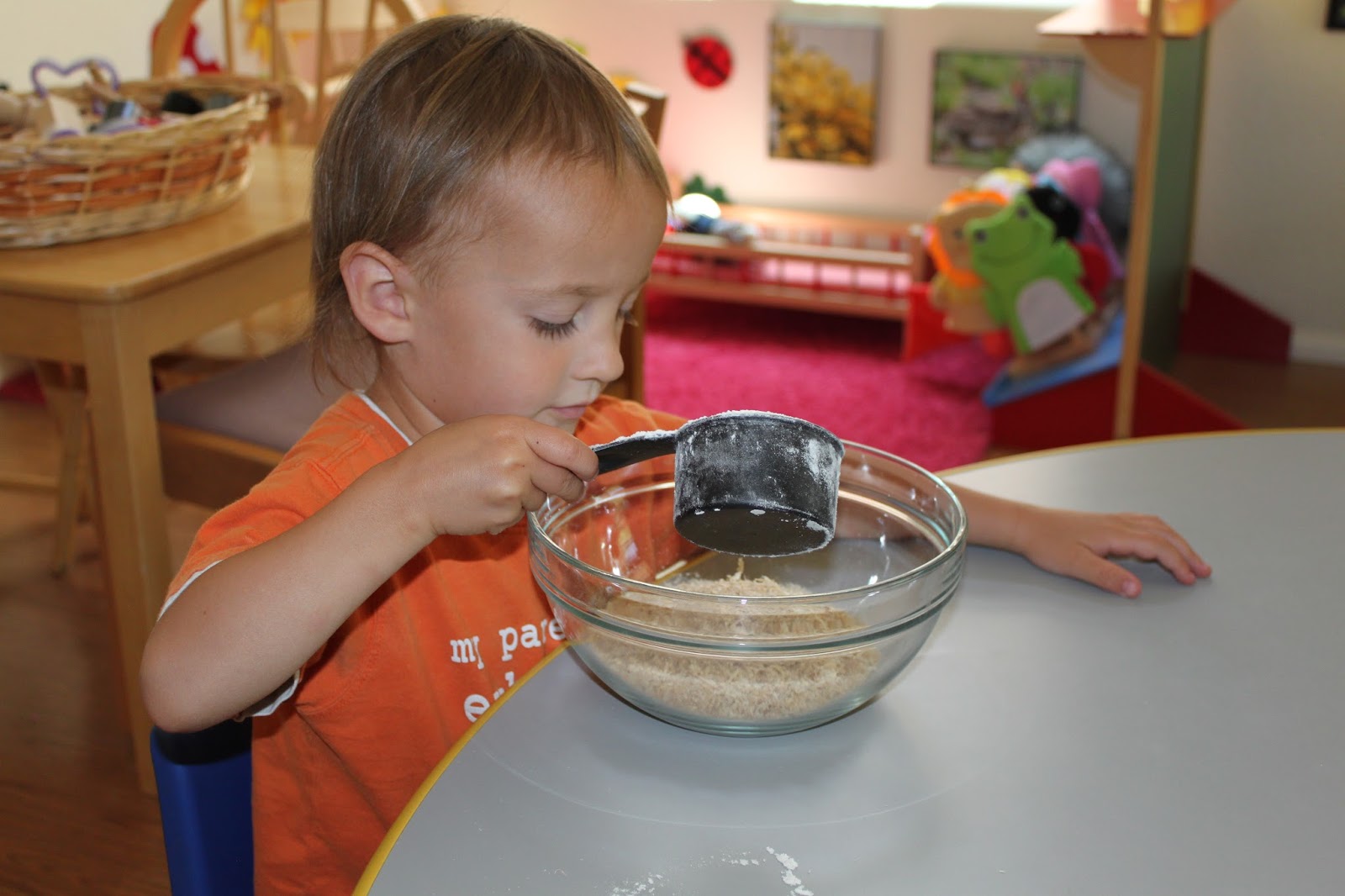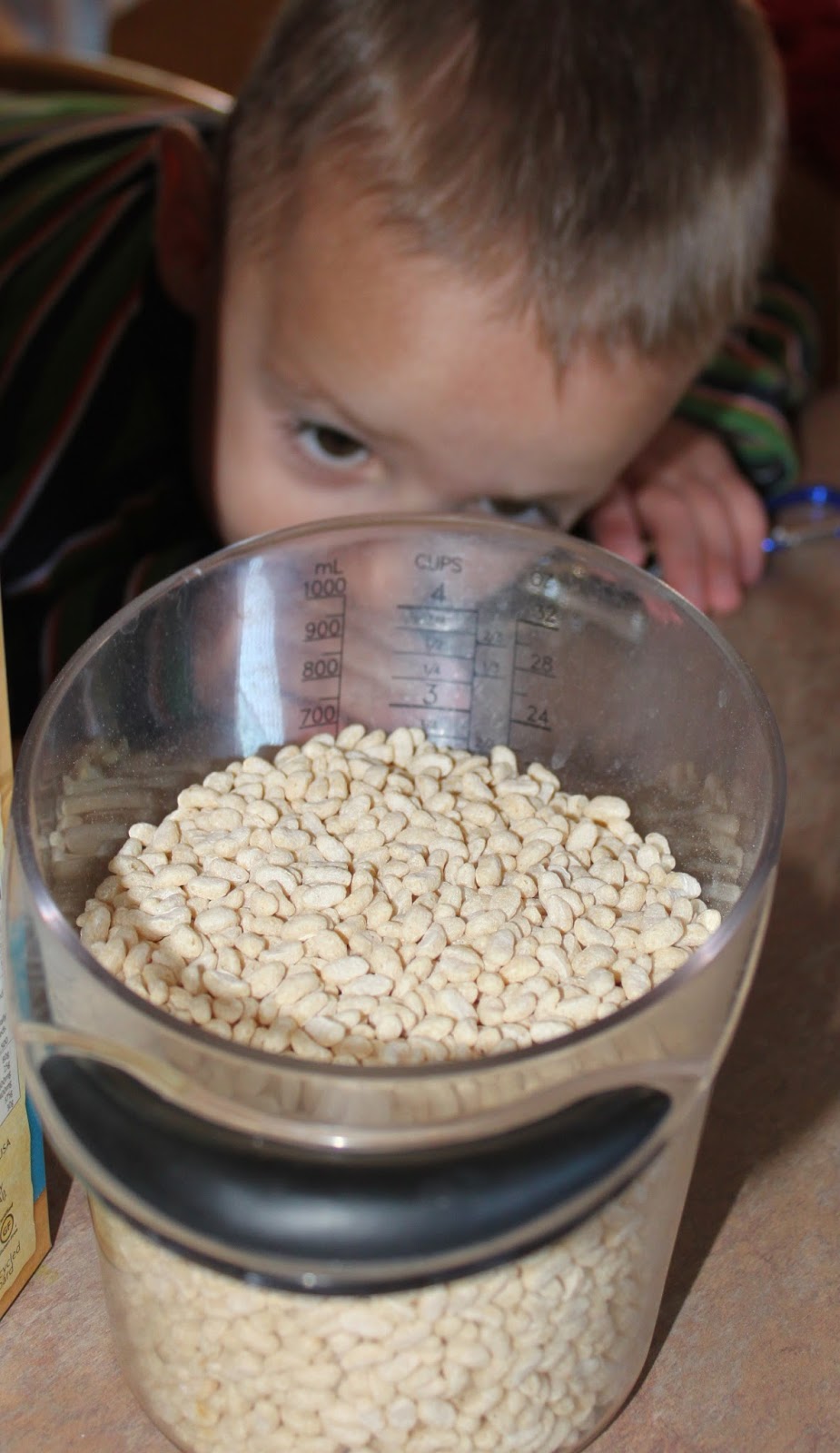Contrary to popular belief, there are many ways to provide opportunities for math exploration in preschool that are far more effective than the ubiquitous worksheets we find in many mainstream preschools and the vast majority of kindergartens. Children are hands-on learners and math is full of abstract concepts that simply can not be grasped by staring at a flat piece of paper or by memorizing pages and pages of math facts.
Here is a look at a small sampling of math activities that have been offered to Seedlings students:
Marshmallow snowmen. Draw happy little faces on a few large marshmallows and give a kid some tongs and what's he learning? Not only an awesome fine-motor activity, but one-to-one correspondence! One happy snowman per muffin cup. Or expand: Three in the top row, three in the bottom row, how many all together? Turn the pan the other way and you have three rows of two! Now we're doing sets, with preschoolers!
February pattern matching for Valentine's day. I have no idea where I found these cards, but there is a similar version in the 'File Folder Games' section at Preschool Printables, which is a great site for finding lots of ideas, many of which are free!
More Valentine's Day fun with a hand-made number game. Count the appropriate number of beads and place them on the felt hearts. There are a zillion ways to expand on this activity: Which has the most? Which has the least? Comparing numbers, larger, smaller, evens, odds, adding, subtracting, etc.
I can't take credit for this one. This is actually my basket of traced hearts for the kiddos to cut out as needed and a bunch of homemade crayons. This little guy thought it would be fun to put a crayon on each heart - more one-to-one correspondence - child-directed!
March counting activity with pennies. Just like the February hearts, but with the added element of money, so now we're talking cents! Have older kiddos? Turn it into a money lesson!
Here's a fun one for Easter time - hide the flowers in the eggs. One flower per egg - or maybe not - who has more? How many will fit? Let's make patterns with eggs or flowers or, heck, eggs AND flowers!
Need to make something? Play dough, other sensory material? Make it with the children. Cooking is the best hands-on math activity. If you mess up and it doesn't come out quite right, even better, ADD something else until it's fixed.
I found some Easter erasers at the Dollar Tree and made a sorting activity. Match the shapes and count or make patterns or a whole host of other applications.
Here's our counting tray for May. Butterflies with numerals and the appropriate amount of dots along with some flower-shaped buttons to keep it festive, fun and seasonal! Even though the children have the opportunity to explore a counting activity each month and each activity is almost exactly the same as far as skills go, changing it out monthly keeps them interested and learning.
Another sorting, matching, counting opportunity. These plastic 'jewels' are also different geometric shapes, adding another complex math skill to the mix. And I love tongs, in case you hadn't noticed! :)
Tangrams are a class favorite! These are a set from Melissa and Doug. Use them with the accompanying boards for shape matching and discussions or just let the kiddos create their own pictures, patterns and designs.
Another one I can't take credit for. Blocks, plain old blocks. Sorting is a fundamental preschool skill and can be done in a variety of ways. This little one went with sorting by shape with the added bonus of a balance lesson.
In September, we do lots of apple activities. This one is a favorite. Sort the pom-pom apples (made a bit more difficult with the addition of tweezers) into the correct bowl. Counting, patterning, adding, etc can all be part of this activity as well.
If you are really stuck for ideas, the easiest thing to do is just give the kiddos a set of numbers. These are magnetic numbers and letters that also happen to include plus, minus and equals signs if you are really inclined to teach math facts. I'm not really inclined to do so, and the children play as desired. You can see some sorting happening on the board if you look close enough.
If you don't have any sensory materials you need to make, pop into the kitchen and make some actual food. Here we are, back to cooking, and he's really making sure we have the right amount of cereal for our special snack. At Seedlings, we bake fresh bread every week and make other cooking projects that require class participation and measurement twice per month.
Unifix Cubes are probably something you recognize from when you were in school. If you want to do some directed teaching, these even come with a handy booklet of activities, but I like watching the magic unfold on its own. This little one spent quite a bit of time building one tower and then holding the two towers next to each other to see which was taller. Then she'd add cubes to the shorter tower to make them equal and begin the process again by adding to the first tower. She talked herself through the whole process using words like 'taller', 'shorter', 'the same'; naming colors and counting.
And there you have it, a full year's worth of math activities for preschoolers - and again, this is just a SMALL sampling of what can be done just by using what's already around your home.
Many years ago when I was just starting to see Early Childhood Education as a career, I was sent by my boss (who also happened to be my Mom) to a conference to hear a woman I'd never heard of talk about preschoolers and play. Only later did I come to realize that I'd spent the entire day with one of the most influential people in the Early Childhood Education field: Bev Bos. I still have, and refer to often, the amazing manual I received that day full of ideas, activities and articles, but this quote stuck with me and has guided me in the way I approach creating activities for my students from that day forward:
"If it hasn't been in the hand...and in the body...it can't be in the brain!" -Bev Bos
















